In 2016, a fire destroyed a cafe in Sydney’s Parramatta Park. With a sensitive touch, both materially and historically, the architects have brought new life to the site by designing a pavilion that respects what was there before.

December 21st, 2022
“Trying to find a way in – to find something that we, and the community, can connect with.” That’s how Sam Crawford starts each project. Based in Sydney’s inner west, the studio places a profound importance upon historical research and site analysis. It is just as well, given the deep and varied historical significance of this site at the geographical heart of Sydney.
Parramatta Park contains layers of history that required an archaeological appreciation by the architects. “It’s an incredibly fascinating site. The Burramattagal lived and hunted there for thousands of years. Apparently that sandy stretch of the Parramatta River is abundant in Aboriginal artefacts spanning many thousands of years, some pre-dating the most recent Ice Age,” explains Crawford.

Then there is the colonial significance, denoted by the park’s UNESCO World Heritage listing. As project architect Louisa Gee says, the history “was not something we considered in only an intangible way; it was actually a big driver of the design.”
The final layer of history is of course the burned remains of the previous building, presenting a puzzle in the finest tradition of heritage architecture. The site had to be managed delicately – no further holes in the ground, for example – while elements of the surviving structure were salvaged wherever possible. “It was,” as Crawford notes, “a puzzle about how to put a building together.”
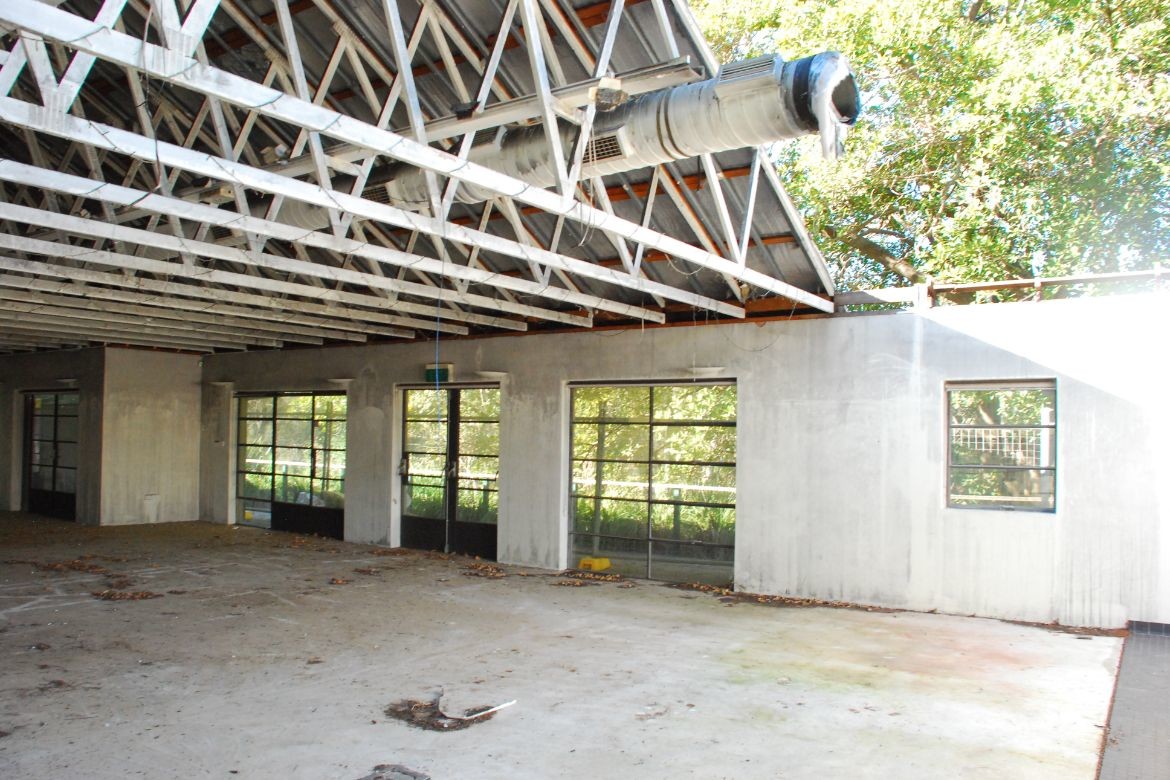
The core of this puzzle was a brief with a high level of constraint, the type that demands architects capable of responding with subtlety, nuance and sensitivity. Whilst this approach is one that the practice strives for in any project, there can be little doubt that this situation of heritage site alongside fire-damaged structure was particularly unique – “incredibly so,” according to Gee. “I’d never worked on a project where you basically couldn’t dig any holes in the ground. However, I much prefer having constraints to push up against,” says Gee.
A key expression of these design parameters is found in the roof structure of the new pavilion: “There’s a language already established with the trusses. We decided to retain and re-use them, as well as replacing a few that had been burned,” explains Crawford.
Related: Studio Chris Fox at Albury Summer Place

This structural language was then carried through into the southern portion of the new building, albeit with a more sophisticated, handsome design. The response is thus neither dismissive of the past nor simply imitative but allows for a contemporary iteration to riff off what came before.
Heritage soon turns into a question of inheritance and the truss, as an archetypal structure, became ‘the way in’ that the architects found for this project. As Crawford notes, the truss form is “an expression of shelter.” Not only are damaged materials salvaged but the aesthetic language itself is at least in part taken up as a deliberate inheritance.
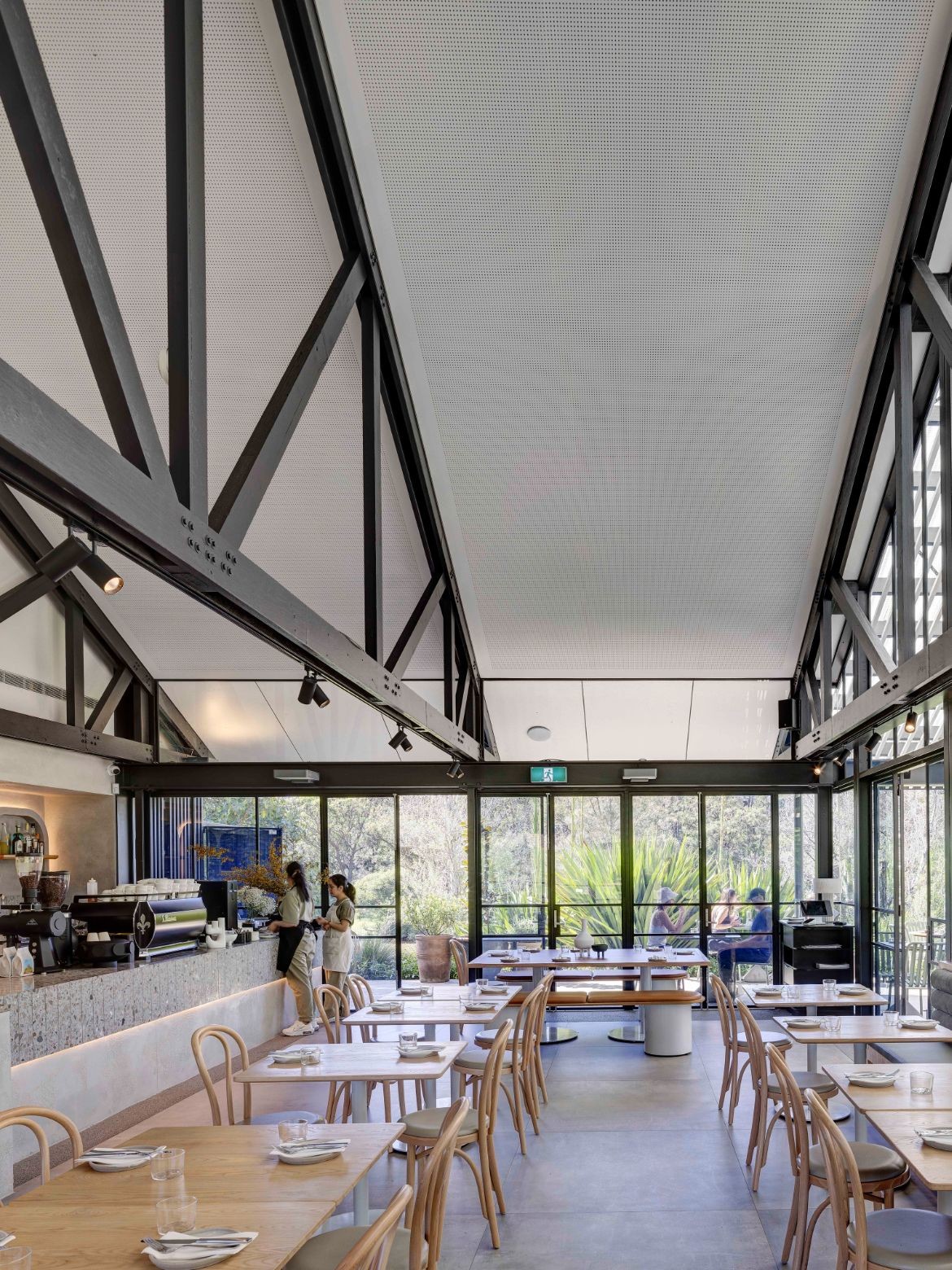
The result is a rejuvenated space defined by height and verticality with an impressive, light-filled entrance area as well as the necessary toilet and cafe amenities. Visitors will find all of this alongside a renewed connection to the river.
In a word, Sam Crawford Architects places respect at the core of its practice: “Respecting the past but also the community that you’re working for,” says Crawford. Parramatta Park has a fitting new pavilion whose storied past can be read in the design.
Sam Crawford Architects
samcrawfordarchitects.com.au
Photography
Brett Boardman (except where credited otherwise)
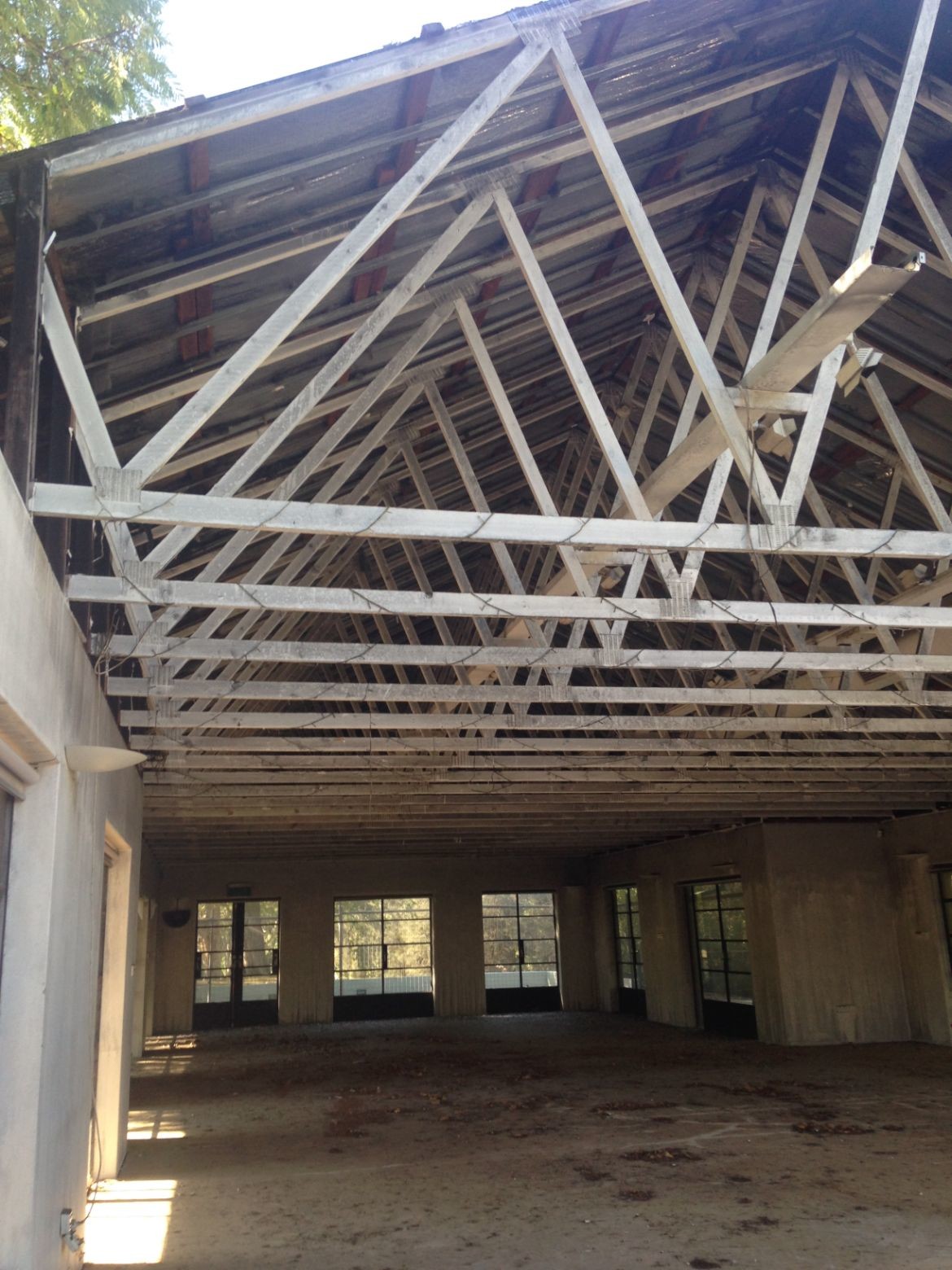
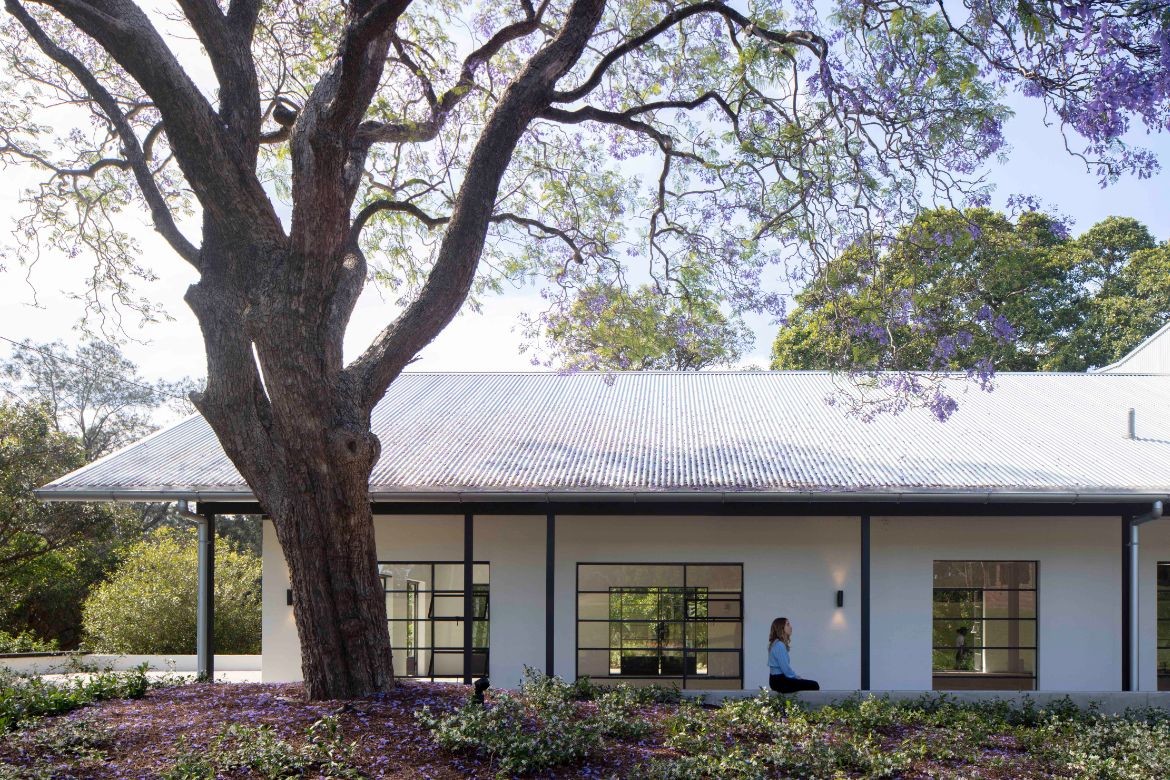


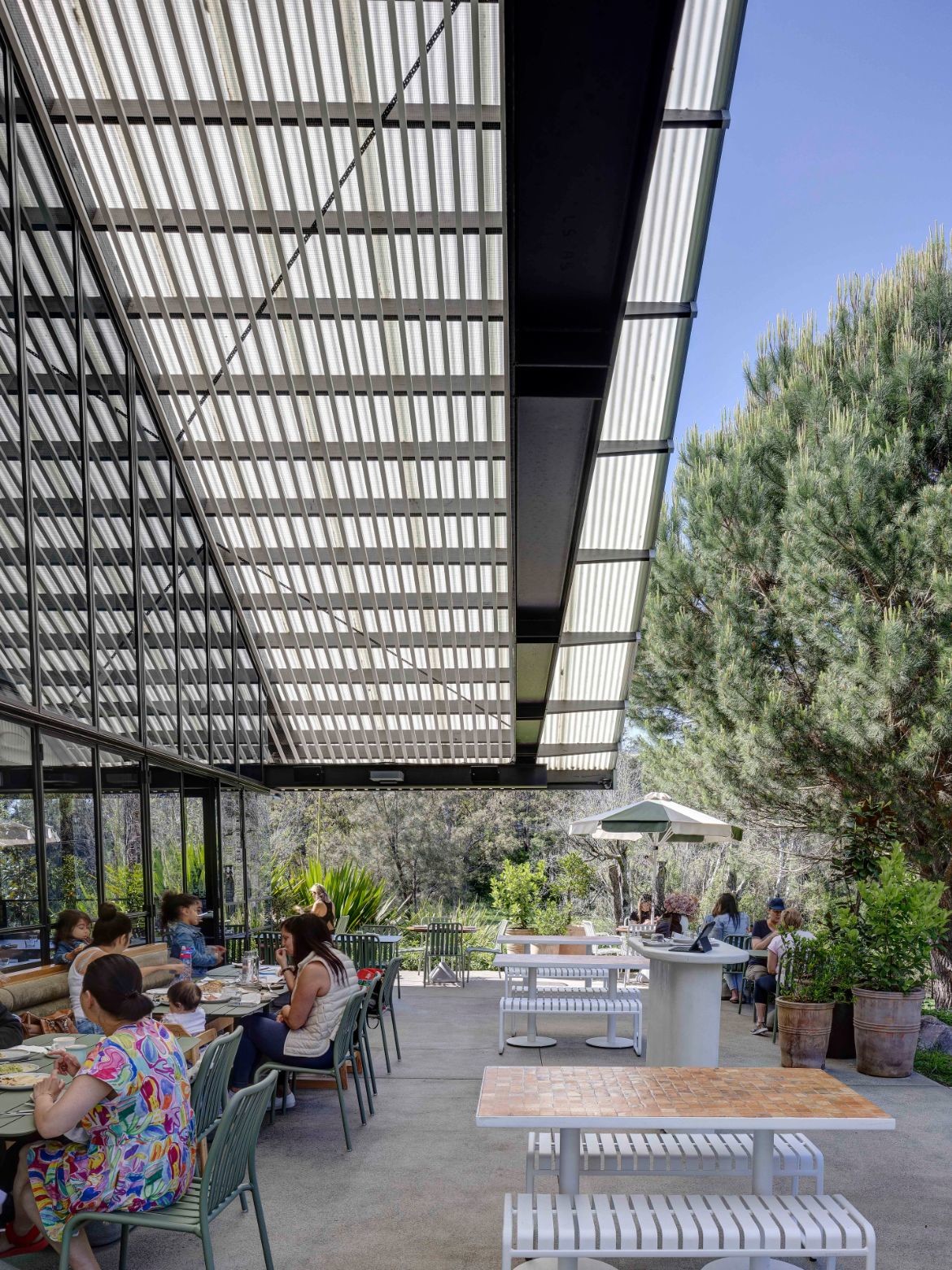
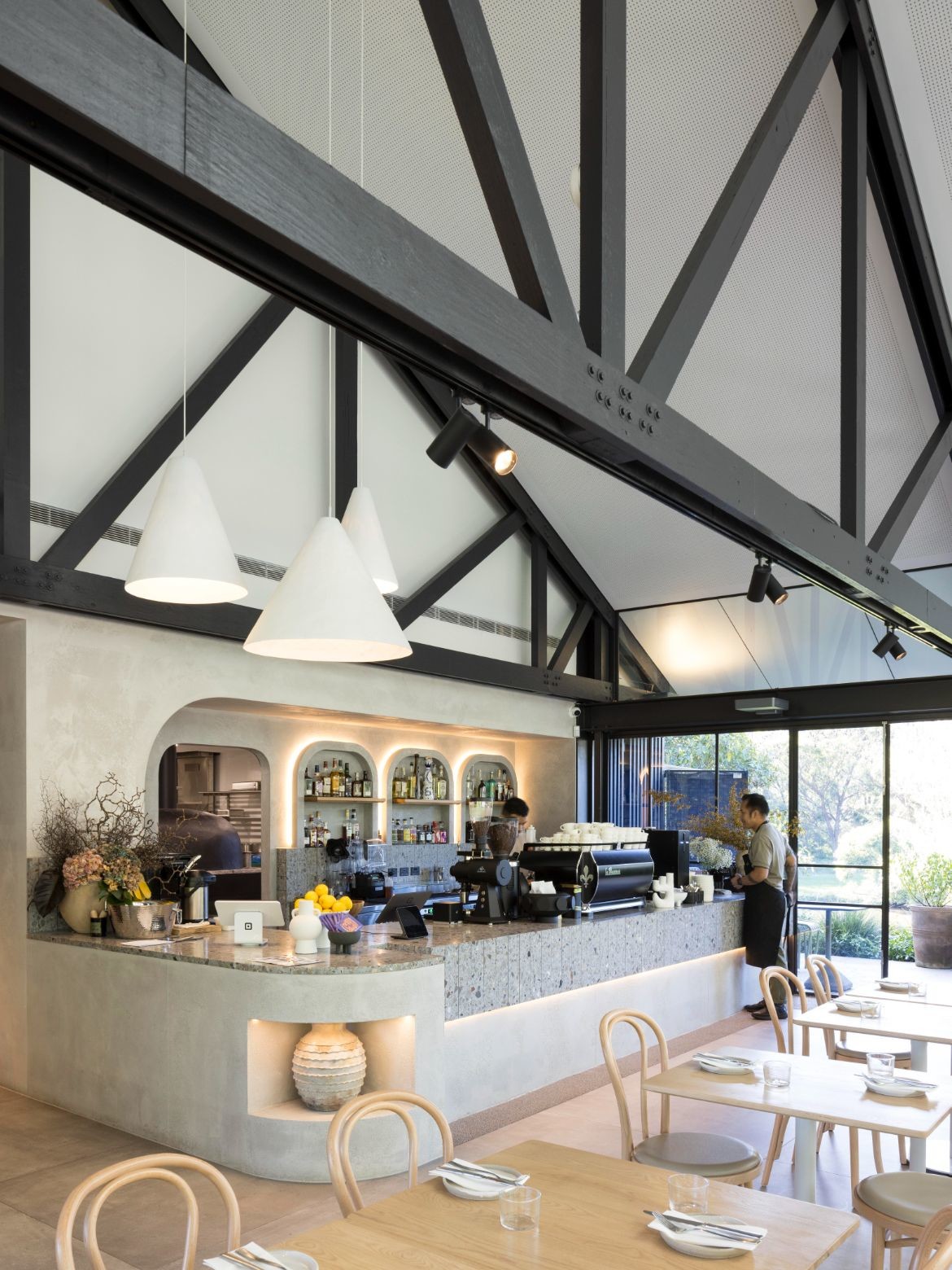
We think you might also like this article on Sydney’s historic stadium architecture.
INDESIGN is on instagram
Follow @indesignlive
A searchable and comprehensive guide for specifying leading products and their suppliers
Keep up to date with the latest and greatest from our industry BFF's!
The new range features slabs with warm, earthy palettes that lend a sense of organic luxury to every space.

Luchetti Krelle’s timeless design at Epula marries heritage grandeur with classic sophistication, celebrating the spirit of a European piazza whilst remaining unmistakably of its place.
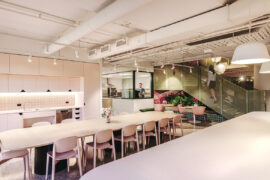
Gray Puksand’s adaptive reuse of former Melbourne office into Hester Hornbrook Academy’s new City Campus shows how architecture can support wellbeing, connection and community.
The internet never sleeps! Here's the stuff you might have missed
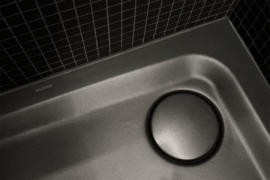
Overlooking Berlin Zoo, the suites of the 25hours Hotel Bikini Berlin curate the sustainability ethos in an entirely unique and dynamic aesthetic. Think natural fabrics and materials, jewel-hued colours, curves and cushions, spa-like bathrooms and hammocks with views over urban greenery.
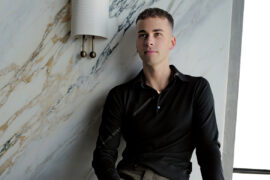
With experience across fashion, styling and interiors, Nicholas Gilbert launches Studio Nicholas with a mission to elevate Australian design on the world stage — and to champion a more rigorous, professional future for the industry.